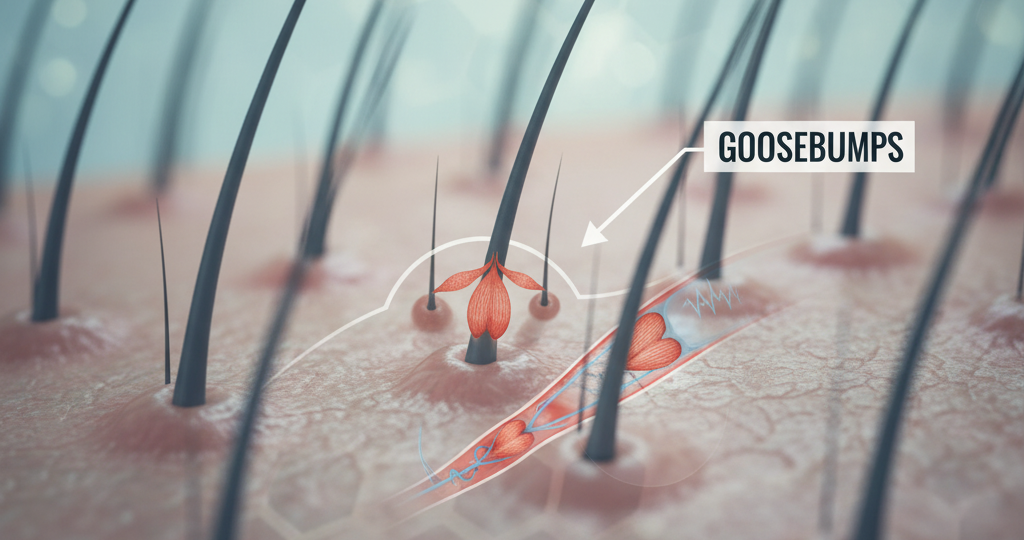
You’ve probably felt it—a sudden chill, a powerful song, or a scary scene in a movie, and suddenly your skin sprouts tiny bumps. Goosebumps seem trivial, but they’re actually a fascinating biological echo of our evolutionary past.
Goosebumps occur when tiny muscles at the base of hair follicles—called arrector pili muscles—contract. This reaction is controlled by the sympathetic nervous system, the same one that triggers our “fight or flight” response. In animals, this reflex made their fur stand up, trapping heat in the cold or making them appear larger to scare off predators. For humans, though, it’s mostly just a leftover mechanism—a biological souvenir from when we were much hairier creatures.
Interestingly, goosebumps aren’t only caused by temperature. They can also appear when we experience strong emotions—fear, awe, nostalgia, or excitement. Scientists call this the aesthetic chill, a mix of physiological arousal and emotional resonance. It’s why you might feel goosebumps during your favorite song or an inspiring speech.
The phenomenon fascinated researchers like Charles Darwin, who wrote about it in The Expression of the Emotions in Man and Animals (1872). Darwin saw goosebumps as evidence of our shared ancestry with animals—a small, involuntary reminder that our emotions and physical responses evolved hand in hand.
RELATED POSTS
View all


